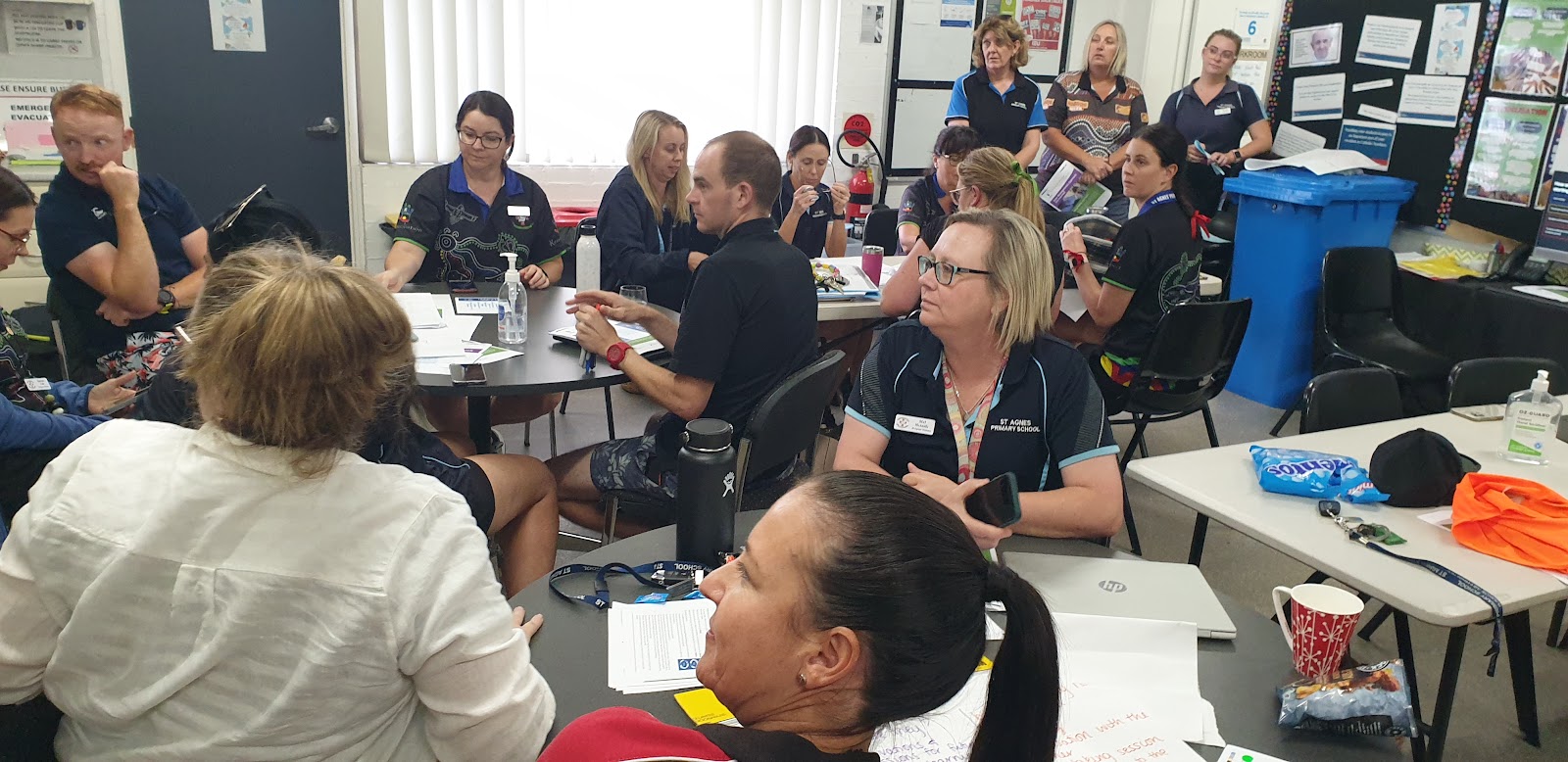Building a Collaborative Data Wall: A Journey in Teaching and Learning
In responding to teacher feedback from the earlier creation of a data wall, it was proposed that teachers create a simplified data wall to meet the writing needs of their students. Here, we share the journey our teaching staff undertook in developing their own data wall with a focus on sentence structure.
Starting with Professional Reading
Our journey began with a shared commitment to understanding the purpose and potential of data walls. Staff engaged in professional readings centered around norms and protocols for using data walls effectively. These readings provided a theoretical foundation, emphasising the importance of data walls and how best to use these as a team. This step was important to ensure that a shared understanding was developed by all teams, prior to the construction of our data wall. We explored the meaning of our watermark and how it centred us back to our core mission. We also examined the difference between independence and interdependence and how this related to our work.
Creating Team Norms and Protocols
With the insights from professional readings, teachers collaborated to establish their own norms and protocols. They also developed their own Learning Intention (which they deconstructed for shared understanding) and Success Criteria in using as well as creating the wall, recognising there was a difference between the two. Norms were tailored to their unique team dynamics and instructional goals. These norms provided clarity and direction, creating a safe space for open discussions and reflective practices.
Aligning with Curriculum Outcomes
The next step involved grounding our data wall in the curriculum. Teachers referred to the NSW syllabus outcomes, specifically those related to Creating Texts and Grammar, to ensure alignment with learning content. Teachers selected two current learning units where sentence structure featured prominently as a focus area, and was evident in the Success Criteria. Teams explored how the content markers of the syllabus aligned to the Learning Progressions and how these were then evident in the Success Criteria of the unit. Teams explored some of the exemplars that featured in the unit and how the Success Criteria was evident, noting this was the possible end result they were aiming for.
Teams utilised the Venn diagram to assist them with placing the 'faces' of their students in relation to the Success Criteria.
This alignment ensured that the data wall was not just a stand-alone document, but directly tied to everyday teaching and learning activities. It also provided a clear framework for evaluating student progress against explicit criteria.
Simplifying Grade Data Walls
To make the data wall meaningful and manageable, each grade team created their own data wall, focusing on key indicators of student progress in sentence structure. The simplified design made it easier to spot trends, celebrate achievements, and identify areas requiring intervention with its parallel alignment to the current work of the learning space. Some grade team's developed the steps between each section of the wall (stars and stairs) and how these steps were communicated in either teacher or student-friendly language. This resulted in corresponding Bump it Up wall. Teams also discussed what their data wall student cards might look like to reflect achievement and growth. In 2025, this will need further consideration.
Taking collaboration a step further, one team partnered with another to develop a Stage data wall. This broader view enabled teachers to build a cohesive approach, and work towards developing a shared understanding of our sentence structure focus across two grades.



















Comments
Post a Comment